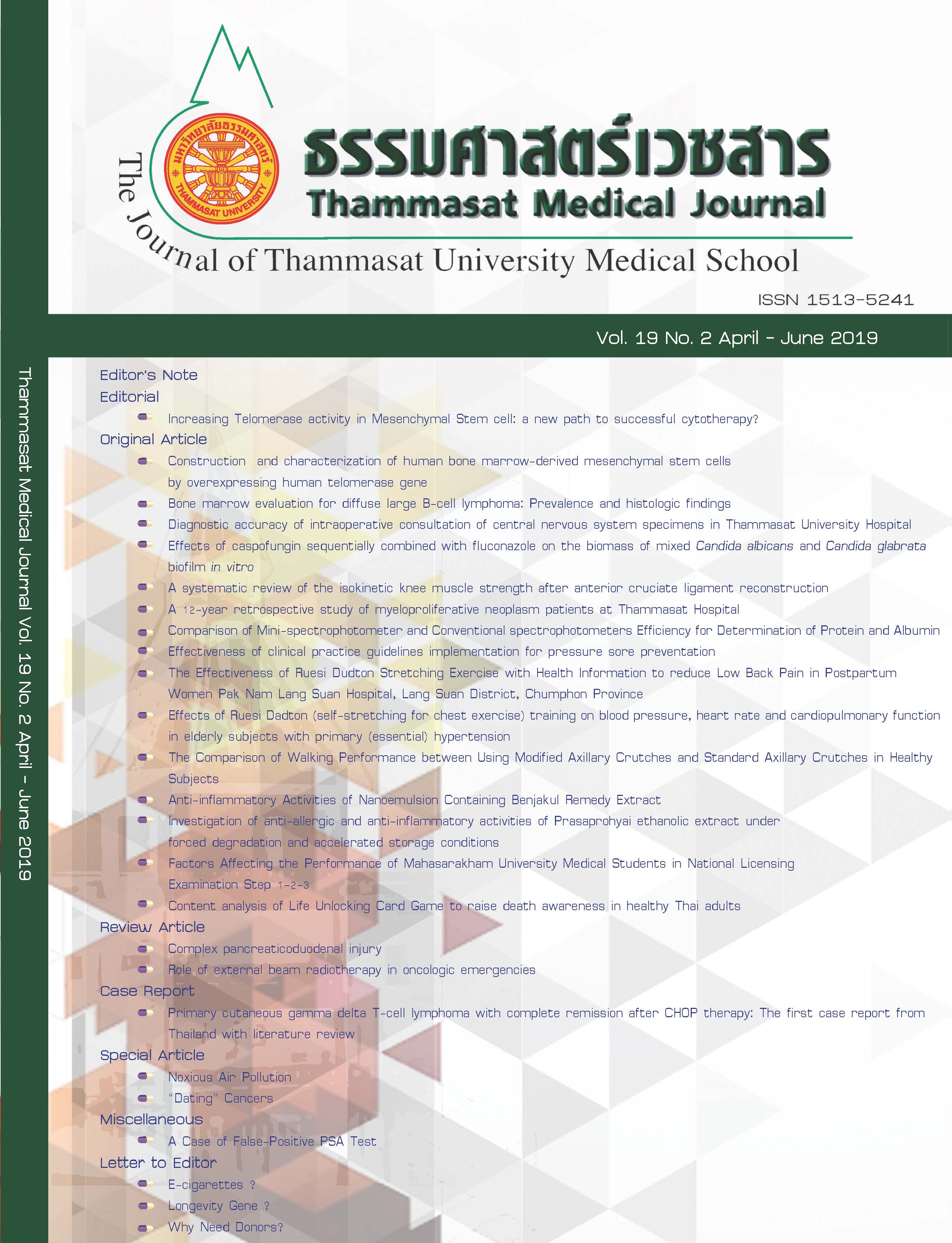The Comparison of Walking Performance between Using Modified Axillary Crutches and Standard Axillary Crutches in Healthy Subjects
Keywords:
Standard axillary crutches, Modified axillary crutches, Energy expenditure index of walkingAbstract
Introduction: Ambulation with axillary crutches is often prescribed to reduce weight bearing after lower limb injury. The standard axillary crutches were known to cause general discomfort to the user and difficult to adjustable height. The modified axillary crutches were designed to improve walking performance. The purpose of this study was to compare walking performance of using standard and modified axillary crutches in healthy subjects.
Methods: The modified axillary crutches were made of main frame’s standard axillary crutches including add brake lever, hand pieces, and slide frame which can determine high level of modified
axillary crutches. Forty-six healthy subjects, aged from 18 to 22 years, participated in the study. The subjects were received into standard and modified axillary crutches. Assessor evaluated outcome measures resting heart rate at the baseline, mean heart rate, and mean gait velocity during assisted gait to calculate an energy expenditure index of walking including a questionnaire were used to assess subject’s satisfaction of product.
Results: The mean resting heart rate, the mean walking heart rate, average velocity, and energy expenditure index of walking for ambulation with modified and standard axillary crutches were 86.93 ± 13.80 and 88.90 ± 10.27 beats per minute (bpm) respectively, 104.24 ± 10.93 and 108.05 ± 12.01 bpm respectively, 25.08 ± 6.85 and 21.76 ± 5.42 meters per minute respectively, and 0.69 ± 0.34 and 0.88 ± 0.46 beats per meters respectively. There was a significantly greater decrease in energy expenditure index of walking for ambulation with modified than standard axillary crutches (p < 0.05). In addition, ambulation with modified axillary crutches were highly satisfied in five items.
Conclusion: The modified axillary crutches can use to easy for the height adjustment, comfort, safety, stability, and change from standing to sitting and sitting to standing easily. Therefore, this model can be an alternate choice to assistive device gait.



